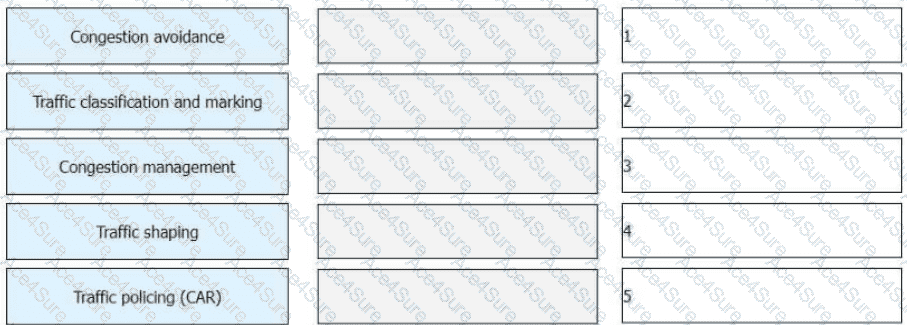TheDifferentiated Services (DiffServ) modelforQuality of Service (QoS)enables traffic management based on predefined priorities. This involvesclassifying, policing, queuing, and scheduling trafficto ensure efficient network resource utilization.
Breakdown of Each QoS Processing Step:
✅Step 1: Traffic Classification and Marking
Purpose:Identifies and marks packets based onQoS attributessuch asDSCP (Differentiated Services Code Point) or 802.1p priority bits.
Function:Assigns aQoS labelto packets for further processing.
Example:Packets carryingvoice traffic (EF - Expedited Forwarding)are marked forhigh-prioritytreatment.
✅Step 2: Traffic Policing (CAR - Committed Access Rate)
Purpose:Enforcesbandwidth limitson specific traffic flows to prevent excessive usage.
Function:Drops or re-marks packetsexceeding the assigned bandwidth threshold.
Example:If avideo stream exceeds 10 Mbps, excess packets may bedropped or re-marked.
✅Step 3: Congestion Management (Queuing and Scheduling)
Purpose:Managestraffic flow through queuesbased on assigned QoS levels.
Function:Places packets in appropriatepriority queues (e.g., Strict Priority, Weighted Fair Queuing - WFQ, CBWFQ).
Example:Voice packets are assigned tohigh-priority queuesforlow-latency forwarding.
✅Step 4: Congestion Avoidance
Purpose:Prevents networkbuffer overflows and excessive packet drops.
Function:Uses mechanisms likeWRED (Weighted Random Early Detection)to drop lower-priority packets before congestion occurs.
Example:If a queuereaches 80% capacity, WRED may droplow-priority packetsto maintain QoS.
✅Step 5: Traffic Shaping
Purpose:Smooths out traffic burststo maintain a consistenttransmission rate.
Function:Buffers and delays packetsto prevent excessive packet drops.
Example:Ifoutgoing traffic exceeds 50 Mbps, shaping ensures itdoes not exceedthis limit while maintaining steady flow.

